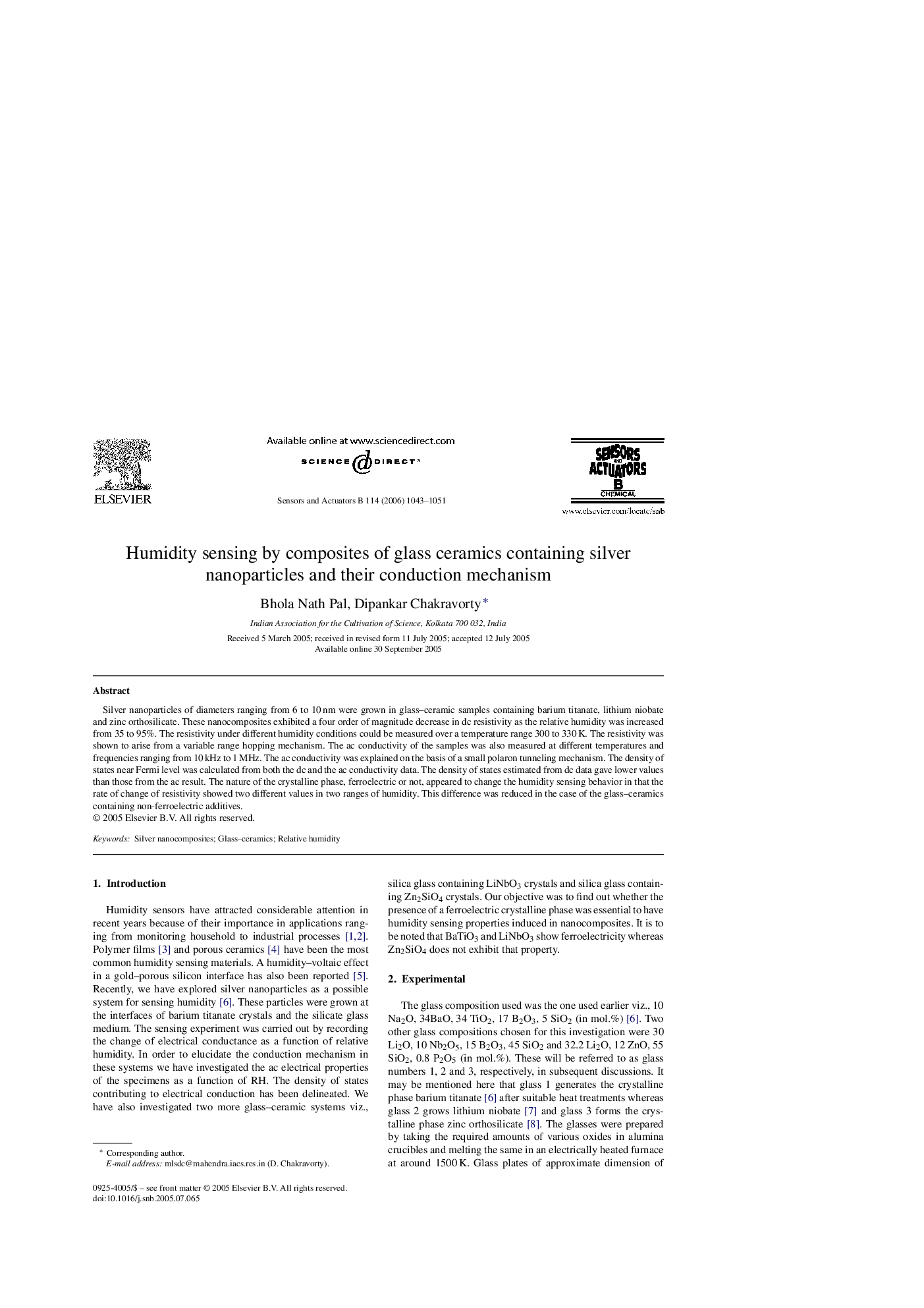| Article ID | Journal | Published Year | Pages | File Type |
|---|---|---|---|---|
| 747419 | Sensors and Actuators B: Chemical | 2006 | 9 Pages |
Silver nanoparticles of diameters ranging from 6 to 10 nm were grown in glass–ceramic samples containing barium titanate, lithium niobate and zinc orthosilicate. These nanocomposites exhibited a four order of magnitude decrease in dc resistivity as the relative humidity was increased from 35 to 95%. The resistivity under different humidity conditions could be measured over a temperature range 300 to 330 K. The resistivity was shown to arise from a variable range hopping mechanism. The ac conductivity of the samples was also measured at different temperatures and frequencies ranging from 10 kHz to 1 MHz. The ac conductivity was explained on the basis of a small polaron tunneling mechanism. The density of states near Fermi level was calculated from both the dc and the ac conductivity data. The density of states estimated from dc data gave lower values than those from the ac result. The nature of the crystalline phase, ferroelectric or not, appeared to change the humidity sensing behavior in that the rate of change of resistivity showed two different values in two ranges of humidity. This difference was reduced in the case of the glass–ceramics containing non-ferroelectric additives.
